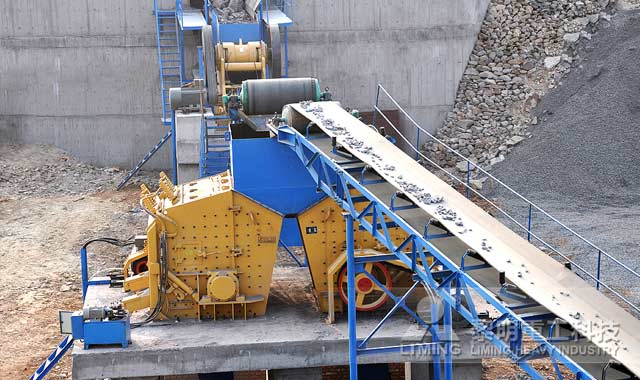Aggregate crushing lines and equipment are critical components of construction and mining industries. They are designed to process various materials, such as granite, limestone, gravel, and sand, into different sizes of aggregates for use in construction projects. An aggregate crushing line typically consists of several components, including primary, secondary, and tertiary crushers, conveyors, screens, and feeders.
The primary crusher is the first machine in the aggregate crushing line, responsible for reducing the size of the raw material. It can be a jaw crusher, gyratory crusher, or impact crusher, depending on the type and hardness of the material. Jaw crushers are commonly used in primary crushing applications due to their simple design, high capacity, and low maintenance requirements. Gyratory crushers are typically used for high-capacity crushing, while impact crushers are ideal for medium to high hardness materials and high reduction ratios.

After the primary crusher, the material is conveyed to a secondary crusher, which further reduces the size of the material. Secondary crushers can be cone crushers, impact crushers, or gyratory crushers, depending on the type of material being processed. Cone crushers are commonly used in secondary crushing applications due to their high efficiency and low operating costs. Impact crushers are ideal for processing soft to medium-hard materials, while gyratory crushers are suitable for processing harder materials.
The tertiary crusher is the final stage in the aggregate crushing line, responsible for reducing the material to the final desired size. Tertiary crushers can be vertical shaft impact crushers or cone crushers, depending on the type of material being processed. Vertical shaft impact crushers are ideal for producing high-quality aggregates, while cone crushers are suitable for producing smaller size aggregates with a higher reduction ratio.
Conveyors, screens, and feeders are important components of an aggregate crushing line. Conveyors transport the material from one stage of the crushing process to another, while screens separate the material into different sizes. Feeders regulate the flow of material into the crushers and can be used to control the size of the final product. Vibrating feeders are commonly used in aggregate crushing lines due to their high feed rates and low maintenance requirements.
Aggregate crushing lines and equipment are available in different configurations and capacities to meet specific project requirements. Portable crushing plants are ideal for contractors who need to move their equipment frequently or have multiple job sites. Stationary crushing plants are suitable for large-scale projects with a long-term production plan. Modular crushing plants offer a flexible and cost-effective solution for both portable and stationary applications.
